Porous composite prosthetic pylon for integration with skin and bone
- PMID: 17943684
- PMCID: PMC3498512
- DOI: 10.1682/jrrd.2006.12.0160
Porous composite prosthetic pylon for integration with skin and bone
Abstract
This article presents results of the further development and testing of the "skin and bone integrated pylon" (SBIP-1) for percutaneous (through skin) connection of the residual bone with an external limb prosthesis. We investigated a composite structure (called the SBIP-2) made of titanium particles and fine wires using mathematical modeling and mechanical testing. Results showed that the strength of the pylon was comparable with that of anatomical bone. In vitro and in vivo animal studies on 30 rats showed that the reinforcement of the composite pylon did not compromise its previously shown capacity for inviting skin and bone cell ingrowth through the device. These findings provide evidence for the safe and reliable long-term percutaneous transfer of vital and therapeutic substances, signals, and necessary forces and moments from a prosthetic device to the body.
Conflict of interest statement
The authors have declared that no competing interests exist.
Figures


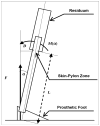

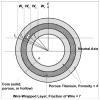



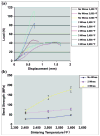
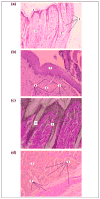
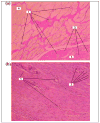
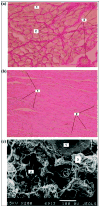

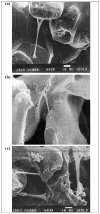
Similar articles
-
New method of fixation of in-bone implanted prosthesis.J Rehabil Res Dev. 2013;50(5):709-22. doi: 10.1682/jrrd.2012.11.0202. J Rehabil Res Dev. 2013. PMID: 24013918 Free PMC article.
-
Mathematical modeling and mechanical and histopathological testing of porous prosthetic pylon for direct skeletal attachment.J Rehabil Res Dev. 2009;46(3):315-30. doi: 10.1682/jrrd.2008.09.0123. J Rehabil Res Dev. 2009. PMID: 19675985 Free PMC article.
-
Recent Progress in Animal Studies of the Skin- and Bone-integrated Pylon With Deep Porosity for Bone-Anchored Limb Prosthetics With and Without Neural Interface.Mil Med. 2021 Jan 25;186(Suppl 1):688-695. doi: 10.1093/milmed/usaa445. Mil Med. 2021. PMID: 33499499 Free PMC article. Review.
-
Skin and bone integrated prosthetic pylon: a pilot animal study.J Rehabil Res Dev. 2006 Jul-Aug;43(4):573-80. doi: 10.1682/jrrd.2005.05.0160. J Rehabil Res Dev. 2006. PMID: 17123195 Free PMC article.
-
Surgical and technological advances in the management of upper limb amputees.Bone Joint J. 2021 Mar;103-B(3):430-439. doi: 10.1302/0301-620X.103B3.BJJ-2020-1184.R1. Bone Joint J. 2021. PMID: 33641410 Review.
Cited by
-
New method of fixation of in-bone implanted prosthesis.J Rehabil Res Dev. 2013;50(5):709-22. doi: 10.1682/jrrd.2012.11.0202. J Rehabil Res Dev. 2013. PMID: 24013918 Free PMC article.
-
Protecting the skin-implant interface with transcutaneous silver-coated skin-and-bone-integrated pylon in pig and rabbit dorsum models.J Biomed Mater Res B Appl Biomater. 2021 Apr;109(4):584-595. doi: 10.1002/jbm.b.34725. Epub 2020 Sep 16. J Biomed Mater Res B Appl Biomater. 2021. PMID: 32935912 Free PMC article.
-
Mathematical modeling and mechanical and histopathological testing of porous prosthetic pylon for direct skeletal attachment.J Rehabil Res Dev. 2009;46(3):315-30. doi: 10.1682/jrrd.2008.09.0123. J Rehabil Res Dev. 2009. PMID: 19675985 Free PMC article.
-
Evaluation of the temporary effect of physical vapor deposition silver coating on resistance to infection in transdermal skin and bone integrated pylon with deep porosity.J Biomed Mater Res B Appl Biomater. 2019 Jan;107(1):169-177. doi: 10.1002/jbm.b.34108. Epub 2018 Mar 23. J Biomed Mater Res B Appl Biomater. 2019. PMID: 29573163 Free PMC article.
-
One lesson from arthroplasty to osseointegration in search for better fixation of in-bone implanted prosthesis.J Rehabil Res Dev. 2008;45(4):vii-xiv. J Rehabil Res Dev. 2008. PMID: 18712634 Free PMC article.
References
-
- Levy SW. Skin problems of amputee. St. Louis (MO): Warren H. Green; 1983.
-
- Eriksson E, Brånemark PI. Osseointegration from the perspective of the plastic surgeon. Plast Reconstr Surg. 1994;93(3):626–37. - PubMed
-
- Brånemark R, Brånemark PI, Rydevik B, Myers RR. Osseointegration in skeletal reconstruction and rehabilitation: A review. J Rehabil Res Dev. 2001;38(2):175–81. - PubMed
-
- Sooriakumaran S, Robinson KP, Ward DA. Pattern of infection of transfemoral osseointegration. Proceedings of the 11th World Congress, International Society for Prosthetics and Orthotics; 2004 Aug 1–6; Wanchai, Hong Kong. Hong Kong: ISPO; 2004. p. 252.
-
- Murphy EF. History and philosophy of attachment of prostheses to the musculo-skeletal system and of passage through the skin with inert materials. J Biomed Mater Res. 1973;7(3):275–95. - PubMed
Publication types
MeSH terms
Grants and funding
LinkOut - more resources
Full Text Sources
Other Literature Sources
Medical
